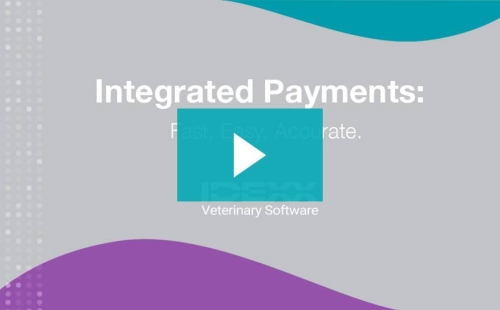Preventing Veterinary Fraud: Payment Security and How to Protect Your Practice

As payment systems become increasingly digitized, payment security should be a top priority for every veterinary practice. Fraudulent credit card transactions, internal embezzlement, scams, and other payment fraud can cost practices time, money, and their reputations.
Practice owners, managers, and team leads must understand the risks of fraudulent activity and implement effective veterinary fraud prevention measures to protect their clinics and employees.
Why fraud is a threat to veterinary practices
Veterinary practices are typically small or mid-sized healthcare businesses with modest administrative teams. Scammers and fraudsters may (correctly) assume that employees receive little or no training in recognizing red flags, making veterinary businesses an ideal target.
Veterinary clinics process dozens of card transactions each day, creating ample opportunities for fraudulent activity. In addition to outside threats, such as cyberattacks and stolen cards, practices may face internal payment security threats.
Staff with access to the practice management system and payment tools may issue unauthorized refunds, pocket cash payments, or manipulate records. Without strong internal controls, this kind of theft can go undetected for months. Studies show that practices can lose up to 5% of their revenue to fraud and embezzlement.
Common payment scams
Veterinary professionals should learn to recognize the most common forms of fraud so they can identify suspicious behavior before it damages the business. Prevalent tactics and scenarios include:
- Fraudulent refund requests – A caller, pretending to be a client, claims they were charged twice or charged in error, and requests a refund to a different debit card or account.
- Stolen cards and chargebacks – Scammers may use stolen cards to purchase products and services at your clinic, for which you may be held liable. Alternatively, clients may attempt to fraudulently dispute payments to your clinic with their credit card companies.
- Phishing attacks – Hackers impersonate your payment processing provider or a trusted vendor. Staff may click a link in a fraudulent email, thinking they are simply doing their job, only to grant the attacker access to the computer and sensitive information or login credentials.
- Internal embezzlement – A veterinary practice manager or receptionist with access to financial systems may be able to issue unauthorized refunds, delete transactions, or make off-the-books sales.
Strengthening payment security in your practice
To reduce or eliminate fraud risk in your practice, start by reviewing payment processing protocols in your animal hospital and determining which employees have access to financial PIMS functions. Next, introduce or reinforce internal controls, such as requiring a two-person approval for all refunds over a certain threshold, and separating duties like end-of-day closing procedures and bank runs so that one person isn’t solely responsible for these tasks.
Your practice management software should also help you strengthen payment security and aid in veterinary fraud prevention. Ensure only authorized staff members can issue refunds, delete invoices, or void charges by using internal permission settings, user activity logs, and individual log-ins for all employees.
Payment security also requires that you address physical and digital infrastructure by:
- Using PCI-compliant card terminals – These meet industry standards to safeguard cardholder data and help prevent breaches.
- Ensuring active encryption – Encryption scrambles data during transmission to keep it secure from hackers.
- Updating software and hardware regularly – Outdated systems are easier for fraudsters to exploit.
Training and awareness for the team
Team members must understand how to spot and respond to suspicious activity and how to avoid falling victim to scams.
Provide training for those who handle in-person payments and phone inquiries on how to verify client identity, confirm transaction history, and respond appropriately to refund requests. Make it policy to issue refunds only to the same payment method or account used for the original transaction, unless authorized by management.
Include fraud awareness in your onboarding and training process and revisit the topic regularly in staff meetings. Share examples of how real-life scammers can impact a small business, and create a culture where team members feel safe speaking up.
Payment security and your PIMS
Secure payment systems work together with your cloud-based PIMS to ensure a steady cash flow for the business, reduce stress on your team, and strengthen your reputation with pet owners. The right practice management system incorporates robust security measures, making payment security easier to maintain.
Together, digital systems and comprehensive training empower team members to detect and prevent fraud, helping to protect the long-term health of your veterinary business.



